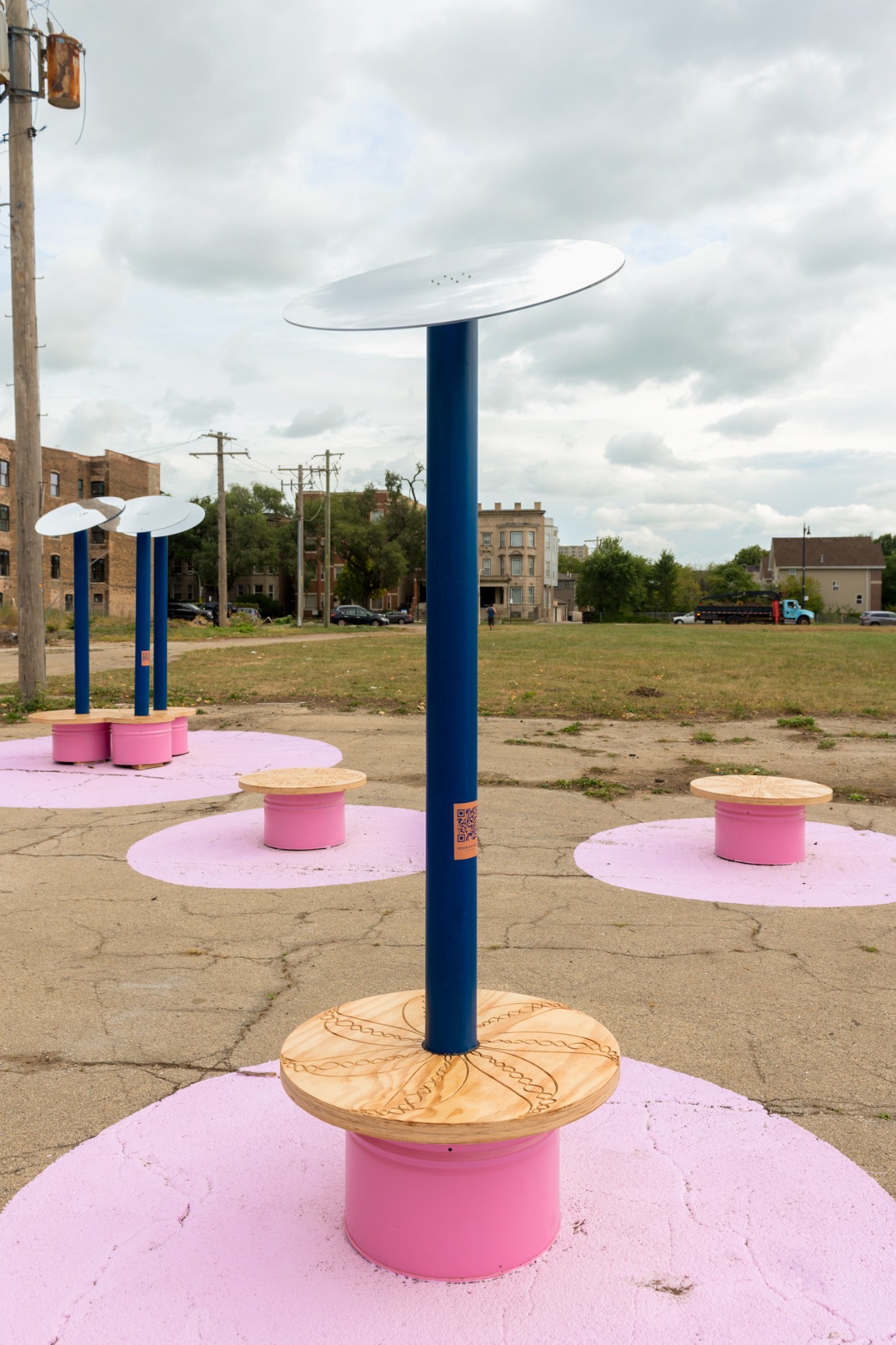As an intersectional collective, Matri-Archi(tecture) uses research and spatial education rooted in the African continent to design spaces and evoke architectural discourses that reflect and archive overlooked cultures. Matri-Archi believes that such cultures can inform spatial environments through everyday practices of routine, occupation, gathering, and negotiation. Reflecting our (Global) South Side offers a space to house everyday interactions and to explore how occupation and reflection can facilitate learning about other cultures. To foster a cultural-spatial dialogue, the design is temporal, dynamic, and reflective. The idea of availability is manifested as a pavilion of reflective floating circular disks perched above organic shaped public seating. The reflective surface invites visitors to playfully observe their surroundings, allowing for introspection and interaction. The installation encourages gathering through its circular forms, referencing the rich value of radial community planning, historically designed by communities in Sub-Saharan Africa. Ultimately, this circular navigation of space subverts the traditions of constricting communities in grids—grids similar to that of the city plan of Chicago. By drawing comparisons between Matri-Archi’s African references and Chicago’s South Side, the installation encourages visitors to explore links between everyday spatial practices that align local communities with those in Sub-Saharan Africa through an emphasis on the role of design. QR codes appear on each pole, inviting visitors to scan into a virtual realm and reflect on the mirrored parallels between the familiar and unfamiliar surroundings. Through these material, digital, and design considerations, the installation encourages continuous conversation, reflection, and framing of moments that foreground the value of everyday spatial practices embedded in memory-making, dwelling, congregating, and moving—all of which allow for learning that is anchored in a generosity of spirit. This generosity of spirit represents an availability to engage with oneself, communities far and near, the site, and the city—all in all reflecting our (global) South Side.
Visit oursouthside.net for the digital archive.
www.oursouthside.net
Concept and design: Khensani Jurczok-de Klerk, Tapiwa Manase, Tshego Mako, Solange Mbanefo
Photography by: Nathan Keay
Fabrication collaborators: Navillus Woodworks
Programme collaborators: Craig and Cory Stevenson of Open Architecture Chicago
Supported by: Chicago Architecture Biennial, artistic director David Brown








